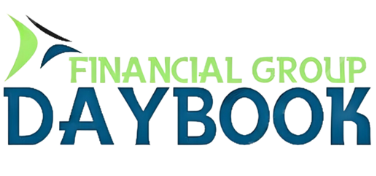Business accounting is a crucial component of organizations worldwide. Accounting is the process of keeping track of financial transactions and producing reports that can help management make informed decisions.
As businesses grow and develop, accounting practices are also evolving. Understanding the aging process in business accounting is crucial to manage finances and increase profitability.
This article explores the different aspects of the aging process in business accounting, including its importance in cash flow management, credit policies, and identifying potential bad debts.
What Is the Aging Process in Business Accounting?
The aging process in accounting refers to the method of categorizing outstanding accounts receivable based on the duration that invoices have been overdue.
The aging process enables businesses to keep track of the aging of their receivables and to take necessary action when the receivables are not paid on time.
The aging process involves dividing accounts receivable into categories based on the time span that the invoice has been outstanding. These categories are typically 30 days, 60 days, 90 days, and 120 days or more.
It’s an essential tool for businesses to manage their cash flow, identify potential bad debts, and evaluate the effectiveness of their credit policies.
Why Is the Aging Process Important in Business Accounting?
The aging process is crucial in business accounting for several reasons. It helps businesses to manage their cash flow effectively.
By categorizing accounts receivable based on the duration that the invoice has been outstanding, businesses can prioritize collections efforts and focus on the most urgent invoices.
The process helps businesses to identify potential bad debts. By analyzing the accounts receivable aging report, businesses can identify customers who are consistently late or have a history of defaulting on their payments.
Businesses can use this information to make educated judgments about future credit extensions to consumers.
It also helps businesses to evaluate the effectiveness of their credit policies. By analyzing the accounts receivable aging report, businesses can identify areas where their credit policies may need to be adjusted.
For example, if a significant number of invoices are consistently overdue, it may be an indication that the credit terms are too lenient.
The Aging Process and Cash Flow Management
Effective cash flow management is essential for businesses to remain profitable and sustainable. The aging process is a critical tool for managing cash flow.
By categorizing accounts receivable based on the length of time the invoice has been outstanding, businesses can prioritize collections efforts and focus on the most urgent invoices.
For example, if an invoice is overdue by 120 days or more, it may be an indication that the customer is unlikely to pay. In this situation, it might be required to pursue legal measures to collect the owed money or consider it as an unrecoverable debt.
By contrast, if an invoice is only 30 days overdue, it may be possible to collect the debt by sending a friendly reminder or making a phone call to the customer.
By prioritizing collections efforts based on the aging of the accounts receivable, businesses can maximize their cash flow and lessen the risk of bad debts.
The Aging Process and Credit Policies
Credit policies are the guidelines that businesses use to determine which customers can extend credit and how much credit to extend. The aging process is an essential tool for evaluating the effectiveness of credit policies.
For example, if a significant number of invoices are consistently overdue, it may be an indication that the credit terms are too lenient. In this case, businesses may need to tighten their credit policies by shortening payment terms or requiring a larger deposit.
Conversely, if invoices are consistently paid on time, it may be an indication that credit terms are too strict. In this case, businesses may need to relax their credit policies to attract more customers and increase sales.
The Aging Process and Bad Debts
Bad debts are accounts receivable that are unlikely to be paid. The aging process is a critical tool for identifying potential bad debts.
For example, if an invoice is overdue by 120 days or more, it may be an indication that the customer is unlikely to pay. In this case, it may be necessary to take legal action to recover the debt or turn the account into a bad debt.
By contrast, if an invoice is only 30 days overdue, it may be possible to collect the debt by sending a friendly reminder or making a phone call to the customer.
By identifying potential bad debts early, businesses can take necessary actions to recover the debt or write it off before it becomes a significant financial burden.
Conclusion
The aging process in business accounting is a crucial tool for maintaining the financial health of an organization. It provides valuable insights into cash flow management, credit policies, and potential bad debts.
Effective use of the aging process can help businesses to maintain a positive cash flow, increase profitability, and achieve long-term financial stability.
Therefore, it is essential for businesses to understand and implement the aging process in their accounting practices to stay competitive and successful.
Accounts payable aging can be a headache for any business owner. That’s why Daybook Financial Group is here to help.
Our NYC-based virtual assistant and back-office support team can customize our services to meet your business’s unique needs and provide a worry-free solution to accounts payable aging. Contact us today for a consultation!
